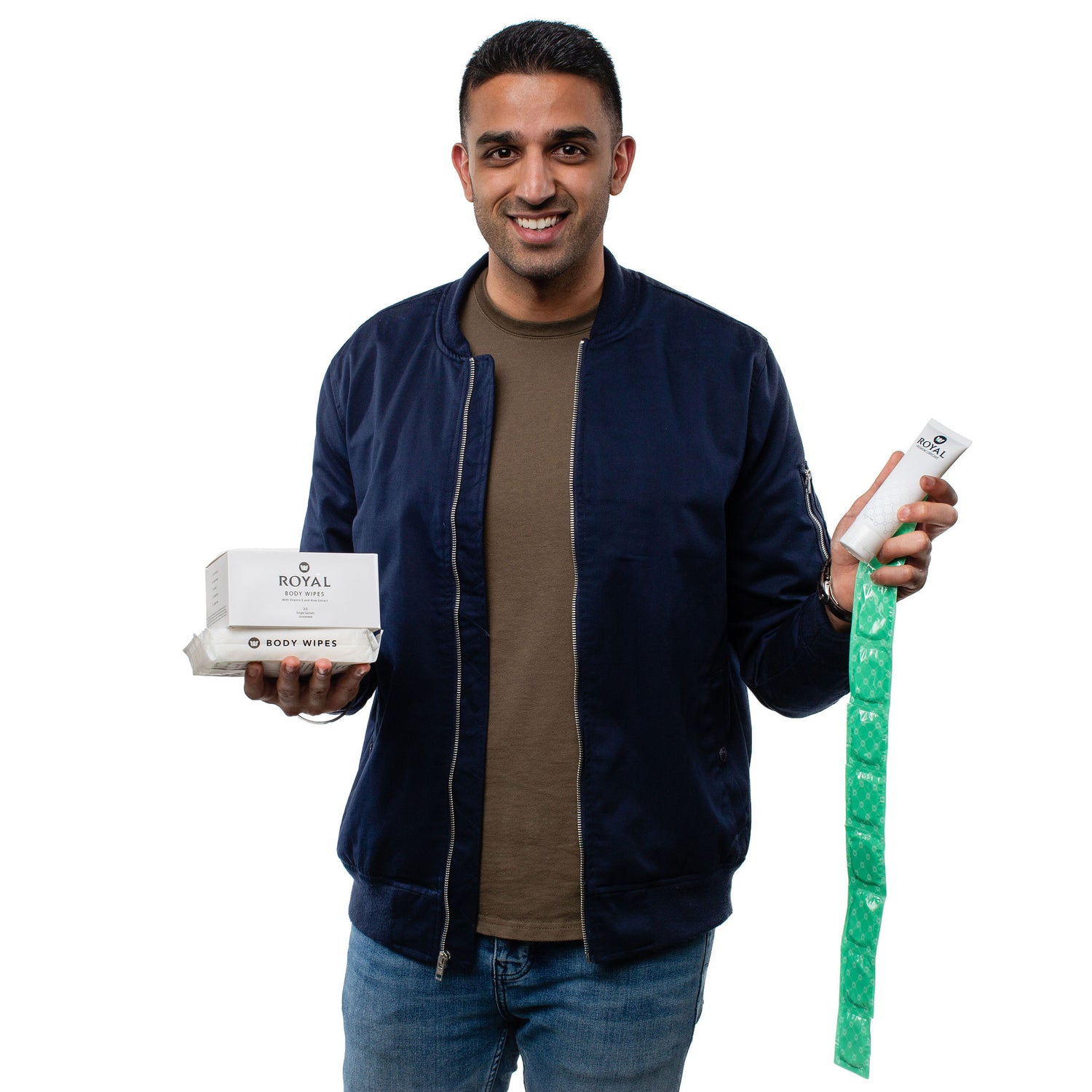What are the ingredients in a Royal condom?
In case you didn't notice, here at Royal, we're not afraid of labels. Especially not our own.
To celebrate how proud we are of our product, we wanted to give you - our customers - a breakdown of every ingredient that can be found in a Royal condom.
We hope you'll be pleasantly surprised.
1) Natural Latex: Latex, as found in nature, is a milky fluid obtained from the Rubber Tree. We vulcanize our latex to increase the strength and resilience of the rubber. (When making condoms, it's important to use an optimized formulation to ensure maximum elasticity - and to make the condoms thin, strong, unlikely to break and comfortable for the user.)
2) Ammonia: While there is no ammonia in Royal latex (it is removed during condom manufacturing) - ammonia is used at the rubber plantation to stabilize the liquid latex after the tree is tapped, to prevent it from coagulating.
3) Potassium Oleate: This salty, fatty acid is FDA-approved as a binding agent in the manufacturing of food! The small amount we use in Royal is a healthy mix of sodium and potassium fatty acid salts.
4) Potassium Hydroxide: While we use this inorganic compound in our manufacturing process, absolutely none is left behind in the finished condom.
5) Emulgin B2/Vulcastab LW: Who doesn't love stability? These two non-ionic surfactants are added to the latex to stabilize it after the manufacturing process.
6) Vultamol: This sodium salt is added to the latex to ensure that the chemicals are dispersed effectively.
7) Sulphur: Epsom Salts come from the same family as this non-toxic elemental sulfur.
8) Zinc Oxide: This inorganic compound protects rubber from fungi and UV light - and is used in hundreds of household items, including baby powder, rash ointment, anti-dandruff shampoos and even some foods. A tiny, non-toxic amount can also be found protecting the rubber in our condoms.
9) Zinc Di butyl Di thio Carbamate: Less than 0.1% of this accelerator compound can be found in our condom, used to prevent the formation of harmful nitrosamines. Without an accelerator, it's not possible to make condoms that meet FDA standards.
10) Irganox 1330: This antioxidant protects the rubber from oxidation.
11) Bentonite Clay: This ground, naturally-occurring clay stabilizes the dispersions of chemicals before they are added to the latex. As a natural clay product, this ingredient is non-toxic and non-irritating.
12) Silicone Lubricant: Retaining slippery properties much longer than water-based lubricants, silicone reacts extremely well with the human body and also nature. Furthermore, Silicone is absorbed by solids in wastewater treatment facilities.
13) Calcium Carbonate and Magnesium Carbonate Powders: Calcium carbonate, also called chalk, is a chemical compound found in rocks, pearls and even eggshells. Magnesium Carbonate is an inorganic salt that combines with the Calcium Carbonate to prevent the condoms from sticking to each other.

How it all started...
Raised in Dayton, Ohio as an Indian-American I had my first condom buying experience when I was 17. In my culture it's taboo to talk about sex let alone having it, so I ran into the store, picked up the first one that didn’t look obvious, and quickly got out of there.
As I got older, my sex life evolved but what I used back then hadn’t changed. Brands didn’t offer healthy or modernized options and they were often gender-binary focused, further enabling taboos and stereotypes around the category.
After receiving my Master’s in Public Health and experiencing an unfortunate condom incident that caused my girlfriend to have a health scare, I decided to bridge my healthcare knowledge with my own experiences to create a brand that focuses on developing healthier, higher quality, and inclusive sexual wellness products for every phase of your intimacy experience.
In 2017, Royal was born...
